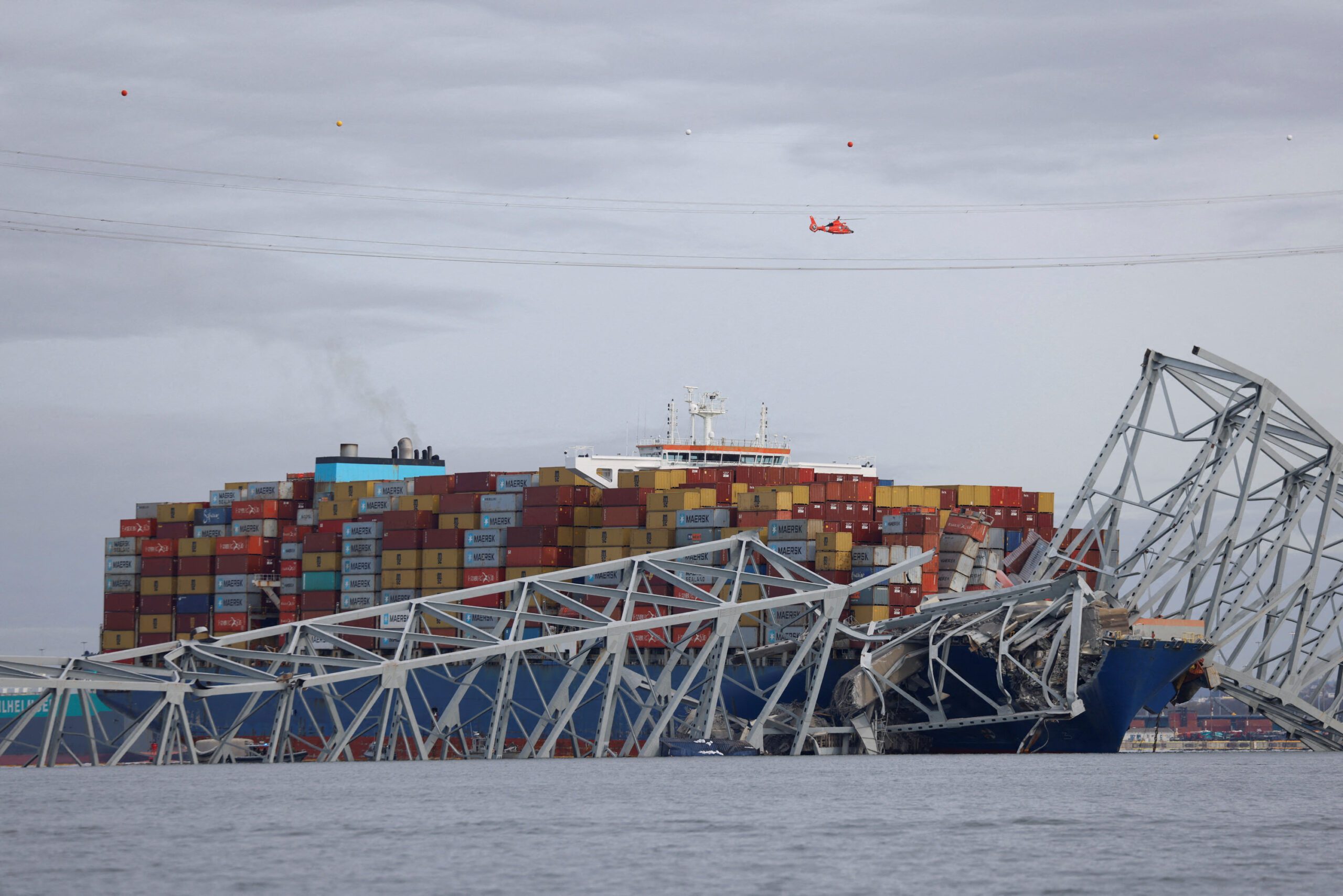Odfjell’s 2009-built chemical tanker, Bow Hector. Photo: Odfjell
(Bloomberg) — The U.S. is importing the most ethanol in four years after the country’s worst drought in a half century drove corn prices to a record, boosting demand for tankers hauling the fuel.
Imports almost tripled in the third quarter from a year ago after domestic output slumped for the first time in 16 years, Energy Department data show. Almost all the extra supply is being shipped by Brazilian refiners, who use sugar as a feedstock. Shares of Odfjell SE, the world’s second-biggest operator of chemical tankers, will almost double in the next year, according to the average of five analyst estimates compiled by Bloomberg.
The least rainfall since 1956 drove corn, the main ethanol ingredient, up as much as 68 percent since June and as many as 10 companies from Valero Energy Corp. to Biofuel Energy Corp. closed plants. Gasoline suppliers are now more reliant on imports to meet laws requiring a 10 percent ethanol blend in the fuel. While that’s boosting shipping by diminishing the glut of vessels, it’s coming at a time when the U.S. is meeting more of its own energy needs than at any time in the past 21 years.
“We’re using Brazilian imports to plug the gap,” said Jerrod Kitt, the director of research at Linn Group, a Chicago- based commodities research company. “In terms of the stated goal of reducing dependence on foreign fuels, the Brazil imports haven’t exactly helped.”
Loss Narrows
Ethanol is one of about 500 products, including alcohols for solvents, aromatics for paints and sulfuric acid for insecticides, carried on the 550-foot-long chemical tankers. Some also haul refined fuels such as gasoline and diesel. Rates for the ships across 23 trade routes rose to a record average of $70.39 a metric ton this year, 4 percent more than in 2011, according to Clarkson Plc, the world’s largest shipbroker.
Shares of Odfjell, based in Bergen, Norway, will reach 33.10 kroner in 12 months, reversing this year’s 51 percent slump, the analysts’ estimates show. The company’s net loss will narrow to $31.56 million for 2013, from $99 million this year, according to the average of seven estimates. Margrethe Gudbrandsen, a spokeswoman, declined to comment.
Stolt-Nielsen Ltd., based in London, is the largest operator of chemical tankers, with 154. Its shares will rise 40 percent to 138.8 kroner in the next 12 months, reversing this year’s 18 percent drop, according to the average of five analyst estimates. Odfjell has 99 vessels and Eitzen Chemical ASA 52.
Gasoline Consumption
Ethanol is made in the U.S. by fermenting starches from corn to create a high-proof alcohol. In Brazil it’s distilled from sugar cane. U.S. output has dropped 17 percent to 803,000 barrels a day this year, Energy Department data show. That’s 900 million gallons (about 20 million barrels) less than refiners are mandated to use each year under a 2007 law requiring them to mix 13.2 billion gallons of biofuels with gasoline in 2012 and 15 billion by 2015.
Imports rose to 1.89 million barrels in September, the most since September 2008, Energy Department data show. Monthly exports fell to 1.57 million barrels this year from a record average of 2.37 million in 2011. The fuel accounts for about 9.5 percent of daily gasoline consumption, according to the Renewable Fuels Association, the industry’s largest trade group.
Inbound shipments boost tanker demand more than exports because Canada takes 53 percent of U.S. sales while Brazil provides 86 percent of imports. U.S. laws make it more attractive to buy from Brazil because the fuel pollutes less than U.S. supply, according to Claudiu Covrig, an ethanol analyst at Sucden Geneva SA.
Gasoline Costs
U.S. ethanol production may rebound should corn prices retreat or gasoline costs advance. Grain for delivery a year from now is about 16 percent cheaper, compared with 6.5 percent for the fuel.
Based on December contracts for ethanol and corn, producers are losing about 34 cents on each gallon produced, according to data compiled by Bloomberg. They were making about 2 cents a year ago. That doesn’t include profit from the sale of dried distillers’ grains, a byproduct that can be fed to livestock.
Owners of chemical tankers may see demand weaken after the International Monetary Fund cut its 2013 forecast for world growth twice since July, to 3.6 percent. Dow Chemical Co., the largest U.S. producer, said in October business conditions were the worst since the global recession as it cut 2,400 jobs. DuPont Co. said that month it was eliminating 1,500 positions.
Investment Bank
Shipping rates may still rise next year because the fleet’s capacity will drop 1 percent, the first contraction since at least 1996, according to ABG Sundal Collier Holding ASA, an investment bank in Oslo.
The chemical shipping market has a smaller glut than crude- oil tankers and dry-bulk carriers because owners ordered fewer new vessels before the recession. Contracts with ship yards peaked at 25 percent of existing capacity four years ago, compared with 48 percent for oil tankers and 74 percent for bulkers, according to data from IHS Inc., an Englewood, Colorado-based research company.
The Baltic Dry Index, a measure of commodity shipping costs, dropped 38 percent this year, according to the Baltic Exchange, the London-based publisher of rates on more than 50 maritime routes. Rates for the largest oil tankers slumped 40 percent to $30,919 a day since April, Clarkson data show.
Chemical tankers can boost income by taking oil products such as gasoline from the U.S. Gulf to Latin American and then collecting Brazilian ethanol on their return, said Frode Moerkedal, an analyst at RS Platou Markets AS, the investment- banking unit of Norway’s largest shipbroker. Exports of refined products averaged 2.84 million barrels a day this year, heading for the highest level since at least 1993, and 24 percent went to South America in September, Energy Department data show.
Energy Needs
The U.S. met 83 percent of its energy needs in the first half, heading for the highest level since 1991, according to Energy Department data. President Barack Obama cited “freeing ourselves from foreign oil” as a policy goal in his speech on the night of his re-election Nov 5. With rising domestic output from underground shale rocks, the world’s largest crude importer will surpass Saudi Arabia as the biggest oil producer by 2020, according to the International Energy Agency.
Corn surged to an all-time high of $8.49 a bushel in August on the Chicago Board of Trade. Prices averaged a record $6.86 this year. Raw sugar fell 15 percent to 19.81 cents a pound in New York trading and ethanol futures gained 7.3 percent to $2.411 a gallon. Average retail pump prices for gasoline rose 3.3 percent to $3.387 a gallon, according to AAA.
“We’ve had to import a lot of ethanol from Brazil,” said Ryan Olmstead, a broker at Odin Marine Group LLC in Stamford, Connecticut, who specializes in the vessels. “There’s still an oversaturation of ships in the market, but you’re just now starting to see the market turn a little bit.”
-By Isaac Arnsdorf. Copyright 2012 Bloomberg.
Unlock Exclusive Insights Today!
Join the gCaptain Club for curated content, insider opinions, and vibrant community discussions.

 Join The Club
Join The Club
















